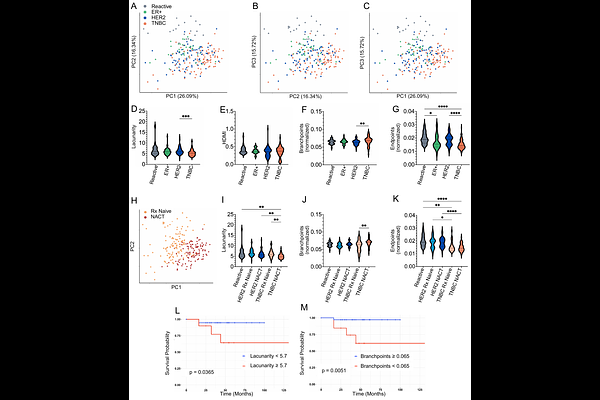Topological Analysis of the Human Lymph Node Reticular Network Predicts Outcome in Breast Cancer

Topological Analysis of the Human Lymph Node Reticular Network Predicts Outcome in Breast Cancer
Llewellyn, A.; D'Costa, S.; Lam, R.; Gore, J.; Lachina, V.; Shewring, D.; Acton, S. E.; Naidoo, K.
AbstractAxillary lymph nodes (ALN) initiate local immune responses in breast cancer (BC) but how and when ALN become dysfunctional, facilitating metastasis, is unclear. We use unbiased computational approaches to quantify features of ALN stromal architecture. We identify PDGFR{beta} as a robust, immunomarker for human fibroblastic reticular cells (FRC) and use it to quantify how FRC network topology changes during BC progression and after treatment. ALN (n = 331) from 179 BC patients and 23 benign reactive controls were assessed for FRC network metrics, including lacunarity and branchpoints, alongside de-identified clinico-pathological data. We find in node-negative, triple-negative BC, neoadjuvant treatment induced denser FRC networks which correlated with improved survival. Conversely, denser FRC networks in node-positive patients correlated with worsened survival, regardless of BC subtype or treatment. Further, increased FRC alignment within metastases improved survival. We show that FRC network topology predicts prognosis in BC, providing a new avenue for mechanistic, translational research.